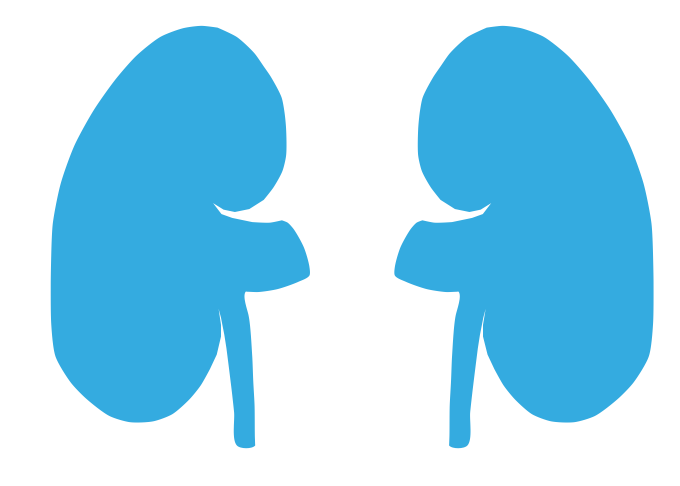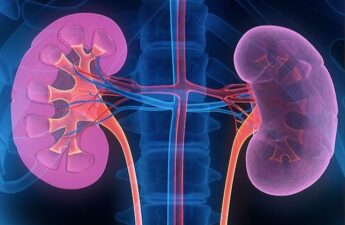
By Phil Galewitz, Kaiser Health News
President Donald Trump on Wednesday announced a bold plan to improve care to patients with kidney disease, which he claimed would save thousands of lives each year and billions of dollars for taxpayers.
“It could be higher if it works the way we anticipate,” Trump boasted in a 25-minute speech to dozens of kidney patients, their families and kidney care providers in Washington.
The initiative aims to dramatically increase the number of patients getting dialysis at home, rather than in costly dialysis centers, and double the annual number of kidneys available for transplants. About 100,000 Americans are waiting for a kidney transplant. Ten Americans die each day because of the shortage of organs, Trump said.
Kidney disease is the ninth-leading cause of death in the United States and accounts for 20% of annual Medicare spending, or about $110 billion, administration officials said.
Trump’s strategy centers on changing how Medicare pays doctors and dialysis centers to boost their incentives to help patients get dialysis at home and keep them healthy enough to be eligible for transplantation. This would be a far cry from the current system, which focuses on in-patient dialysis center treatment.
Dr. Mark Rosenberg, president of the American Society of Nephrology, said he was pleased that some of the new payment models offered by the Centers for Medicare & Medicaid Services have only “upside” potential for doctors. He said doctors now get paid more to see their patients at the dialysis center than at home. As a result, there is little incentive to promote home dialysis options.
“I have been a kidney doctor for 35 years, and this is the most game-changing thing ever to happen,” he said.
The authority to make such major changes without congressional approval comes from the Centers for Medicare and Medicaid Innovation (CMMI), which was created by the 2010 Affordable Care Act.
On Tuesday, the Trump administration was in a federal appeals court in New Orleans arguing the entire health law should be declared unconstitutional.
“If the law is invalidated, the Innovation Center, and all its authorities, would be eliminated,” said Nicholas Bagley, a University of Michigan law professor.
In touting the new effort, Health and Human Services Secretary Alex Azar and CMMI Director Adam Boehler spoke about how kidney disease has affected their families. Azar noted his father was on dialysis for several years before receiving a kidney transplant. Boehler said an aunt died while on dialysis.
Since 1973, all Americans with end-stage kidney disease have been entitled to coverage through Medicare.
The administration said it would expand the number of kidneys available for transplant by increasing public awareness about the need for living donors and help those who donate a kidney. Currently, their medical costs are covered but the president’s plan would provide financial assistance to cover day care and time missed from work. Trump said the initiative would also hold organ procurement organizations more accountable so that fewer usable organs are discarded.
Trump said his plan would help 17,000 additional Americans get a kidney transplant each year by 2030. The policy would also help 11,000 more Americans get hearts, lungs and livers annually.
Kidney transplants cost less than having patients spend years on dialysis, according to government figures. Dialysis treatment runs on average about $89,000 a year, while a kidney transplant surgery averages about $32,000 and post-surgery care runs about $25,000 per year. Trump estimated his plan would save families and taxpayers $4.2 billion a year. “This is a dramatic and long overdue reform,” he said.
In the United States, only about 12% of patients get dialysis at home, far lower than in other countries, Trump said. The plan calls for increasing that share to 80% by 2025.
Nichole Jefferson, 47, of Dallas, who is awaiting a second transplant to replace a transplanted kidney that is failing, said getting the treatment at home is much less taxing. She had home dialysis for four years, before her initial transplant in 2008.
“It’s great to be at home where I was more comfortable and more relaxed and the care was in my hands,” she said in an interview at the Trump event. By getting dialysis at night while she slept, she was able to work during the day and take part in family events.
She had to go to a center for the dialysis when the home dialysis stopped working. “I was depressed to be in the center tied to a chair for four hours next to people I did not know,” she said. Patients often have dialysis several days a week.
Other patient advocates applauded Trump’s plan.
“The administration’s commitment to charting a new course for kidney health will help revolutionize transplantation and dialysis and advance new innovations, therapies and treatments, which patients everywhere have been waiting on for far too long,” said Kevin Longino, CEO of the National Kidney Foundation and a kidney transplant patient.
DaVita, the Denver-based company that is the largest provider of home dialysis in the country, offered a more muted response, saying it looked forward to working with the administration. The company’s stock, which fell in recent days ahead of the announcement, rose about 5% Wednesday.
Administration officials said many aspects of their plan would begin next year. Health providers in half the country will be required to participate in one of the new payment models in which they will face some financial risk for caring for patients. Doctors and health systems will have options to take on more financial risk, which means they could make more money or lose more money based on the health of their kidney patients.
Patients, however, will continue to be able to choose their doctors and dialysis providers.
Joe Grogan, head of the White House Domestic Policy Council, said the kidney disease issue “fits in the wheelhouse of items the president likes to confront. … The current quality of outcomes are pathetic in this area.”
About half of patients on dialysis die within five years, Azar said.


